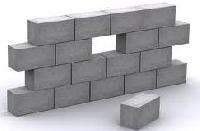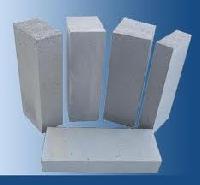
Aerocon Blocks

AAC Lightweight Blocks
Autoclaved Aerated Concrete (AAC) is a certified green building material, which can be used for commercial, industrial and residential construction. It is porous, non-toxic, reusable, renewable and recyclable. AAC was developed in 1924 by a Swedish architect, who was looking for an alternate building material with properties similar to that of wood – good thermal insulation, solid structure and easy to work with – but without the disadvantage of combustibility, decay and termite damage.
...more
AAC Blocks
50 - 120 Per depending upon thickness
1200 Piece(s) (MOQ)
we are pleased to introduce ourselves as ‘kamlesh greencrete pvt ltd’, engaged in manufacturing of aac (autoclaved aerated concrete) light weight blocks. we have set up a state of art aac manufacturing plant at gummidipoondi, chennai, tamilnadu with a production capacity of 15,000 cubic meter per month. these are fabricated at our site using finest quality of fly ash (carbon less), to ensure their durability, reliability and eco-friendliness. owing to light in weight, good compressive strength, low water absorption, good thermal properties, aac blocks find huge application in construction industry. manufactured as per the construction industry norms. sizes available: 600mm x 200mm x 200mm (8”) 600mm x 200mm x 150mm (6”) 600mm x 200mm x 100mm (4”).
Size : 600x200x100 mm (150mm, 200mm, 230mm)
Type : AAC Blocks
Brand Name : KAMCRETE
...more
Aac Block Manufacturing Unit
First, the fly-ash (carbon less) is mixed with water, and made as slurry mixture. The slurry is then stored in a storage tank, where it is constantly agitated. Care is taken to ensure that the slurry storage tank is kept running continuously, so that it never settles down the particles. After, a weigh batcher weighs the slurry, lime, OPC Cement (53 Grade), and aluminimum powder (aeration agent) in preset quantities, and mixes thoroughly. The mixture is then poured into a mould cart to fill just around 50% of its area of capacity. The mould is then kept in a warm chamber for 2 hours so that the aeration process and light initial setting takes place. Finally, the mould now becomes a green cake and is ready for the de-moulding process. De-moulding process involves a sophisticated overhead hoist crane which demoulds the cake from its cart and places it onto the cutting line. The cutting line involves the cake being passed through a series of wires for computerized cutting - first horizontally, and then vertically. The final blocks are now steam cured in giant autoclaves for 8 hours at 12KG Sq. cm. pressure and 200 degree Celsius.
...more
autoclaved aerated blocks

Light Weight Blocks
Be first to Rate
Rate ThisOpening Hours